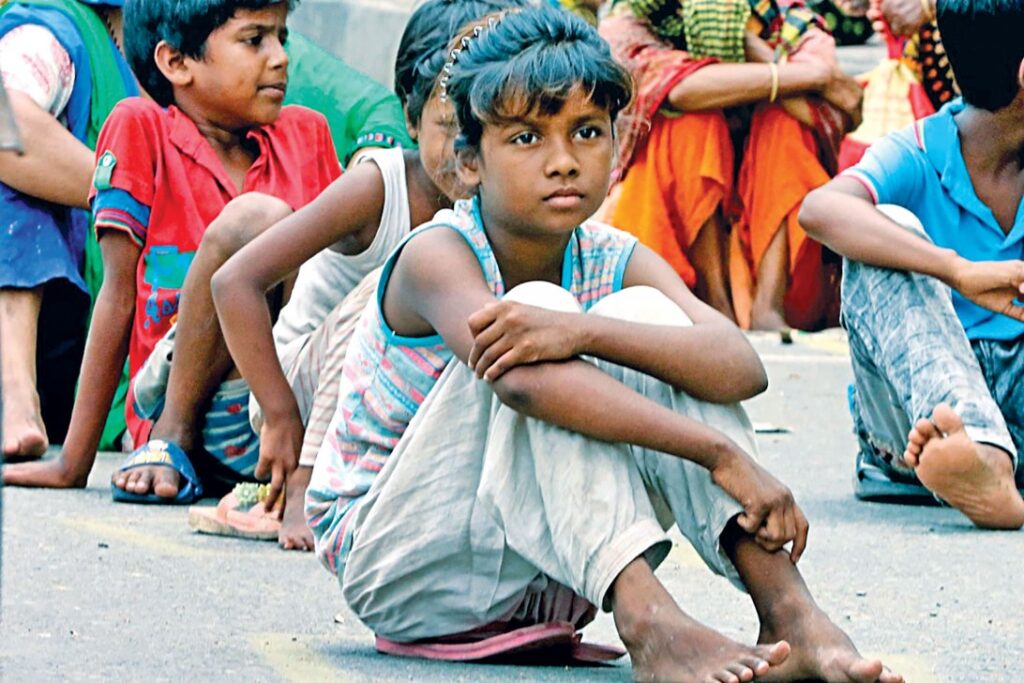Researchers from South Asian Network on Economic Modeling (SANEM) discuss the poverty impacts of Covid-19 in Bangladesh
Covid-19 has spread all over the world in a manner that is very unprecedented. Like most of the affected countries, Bangladesh has been compelled to impose a lockdown, resulting in people staying at home and restraining economic activities. This is likely to lead to a huge distressing impact on the economy. Furthermore, as the advanced economies are projected to fall into prolonged recession, and the middle-eastern countries are already suffering from plummeted oil prices, all these will have serious negative implications for our export and remittance earnings.
There are debates over the economic impact of Covid-19 in Bangladesh. While both the World Bank and the IMF have projected a drastic fall in GDP growth rate, Bangladesh government’s projection seems to be rather optimistic. However, the exact magnitude of the impact of Covid-19 on Bangladesh economy will depend on the length and spread of the crisis along with the mitigation measures taken by the government. There is no denying that the worst victims of the slowing down of economic activities are the poor people, many of whom are dependent on daily earnings and live hand to mouth. Also, this crisis is feared to have a disastrous impact on the low-income people who are otherwise considered “non-poor” but are very vulnerable to fall into poverty due to any negative income shock. A large segment of these low-income people is engaged in informal activities with high volatility in earnings. Any assessment of the impact of Covid-19 on the country’s poverty scenario, therefore, needs to take into account both the poor and “non-poor” vulnerable population.
According to the recent estimates of Bangladesh Bureau of Statistics (BBS), 20.5 percent of the population, or around 34 million people, are poor. However, according to SANEM’s estimate (uplifting the poverty line income by 1.25 times), there are another 36 million people who are “non-poor” but can be categorised as a vulnerable population. With any income shock, there is a high probability that a significant proportion of this vulnerable population will fall into poverty. Preliminary findings from ongoing research of SANEM on Covid-19’s economic impact in Bangladesh—i.e. simulations using the latest Household Income and Expenditure Survey (HIES) data of BBS—reveal that with a negative income shock of 25 percent, the overall poverty rate will be 40.9 percent, which means that another 20.4 percent of the population will fall into poverty.
Here we have assumed that a three-month lockdown (which is most likely) can lead to a fall in at least one-fourth of the incomes of households (note that the magnitude of the reduction in income can vary if the economic crisis is prolonged). This suggests that the success in poverty reduction in Bangladesh over the past one and a half decades since 2005 may go in vain due to this crisis. In 2005, the poverty rate was 40 percent, which was even lower than our estimate of 40.9 percent poverty resulting from the ongoing crisis.
It can also be mentioned that the poverty impact of any income shock may differ depending on the people engaged in various economic activities. Our simulation results suggest that most of the newly poor in Bangladesh will be concentrated in economic activities like crop, animal and fishing production (43 percent), different manufacturing activities including RMG (16 percent), retail trade (11 percent), transport activities (10 percent), and construction activities (7 percent). Given that the majority of these people are employed in informal activities (85 percent of the employed), any employment shock is feared to have severe implications for the overall level of poverty of the country, as mentioned above.
Contrary to the aforementioned regions, the estimated impact is found to be lower for Dhaka, Narayanganj, Gazipur, Munshiganj, Brahmanbaria and Narshindi. However, since the initial hotspots of infection are concentrated in many of these areas with a high density of population, the fall in income of households in these regions can be much higher than our assumption of 25 percent income shock. Also, the higher concentration of small-scale trading activities, which can be heavily hit by the lockdown, may result in much more depressing impacts than the aforementioned estimations.
In combating the Covid-19 crisis, the government of Bangladesh has already announced several stimulus packages and social protection programmes which certainly indicate its positive intention to reduce the negative economic impacts of Covid-19 as well as minimising the burden on the poor and vulnerable population. However, the success of these initiatives will depend on three factors: 1) effectively identifying the vulnerable people and thereby determining the nature and duration of support; 2) ensuring that the genuinely affected industries and poor and vulnerable people receive support; and 3) introducing a Monitoring and Evaluation (M&E) mechanism to ensure efficiency, transparency and accountability in the distribution mechanism.
SANEM researchers Dr. Selim Raihan, Dr. Sayema H. Bidisha and Mahtab Uddin of Dhaka University, Md. Tuhin Ahmed and Md. Jonaed have contributed to this piece.

